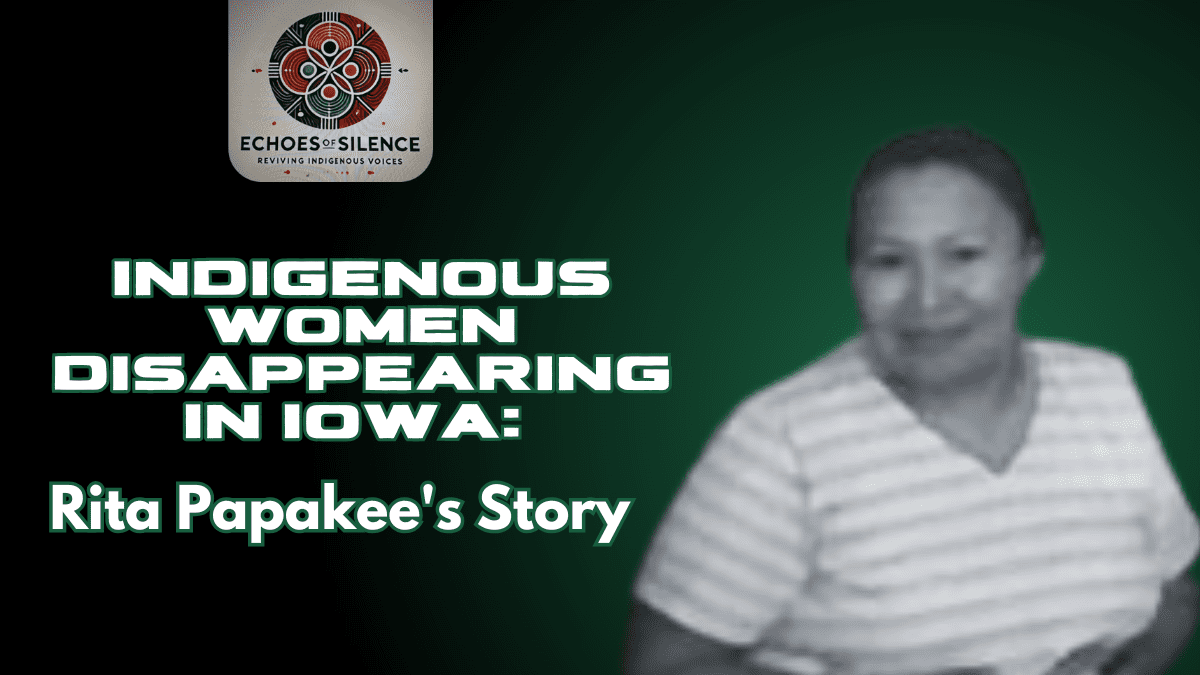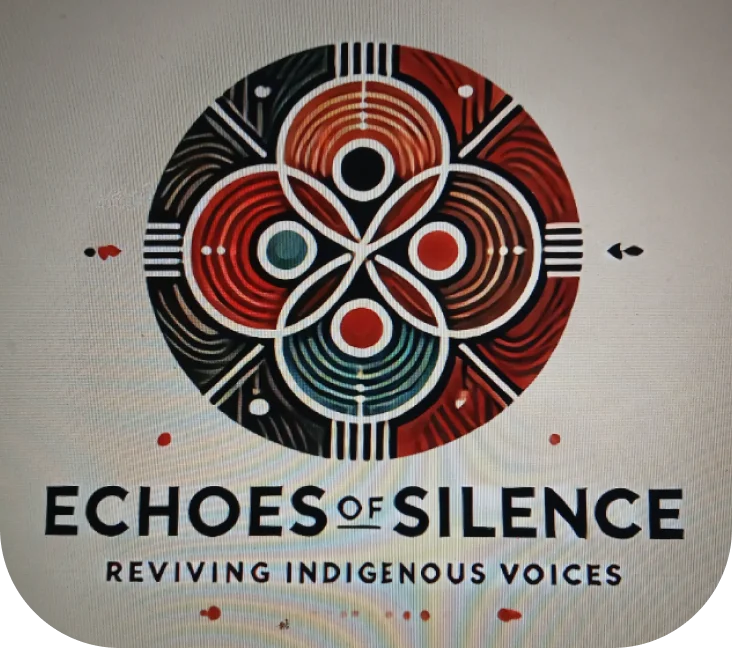The Silent Crisis: Indigenous Women Vanishing in Iowa

They’re gone. Just like that.
When Indigenous women vanish in Iowa, their stories rarely make headlines. Their families wait in agony. Communities mourn in silence. And too often, nothing happens.
This isn’t just sad—it’s a pattern. Indigenous women are disappearing across America, and Rita Papakee’s heartbreaking story is just one piece of a much bigger problem that needs our attention now.
Here’s what you need to know:
- Indigenous women face murder rates 10× higher than average in certain areas
- Many cases stay unsolved for years
- Police jurisdiction issues create dangerous gaps in protection
- News coverage barely exists compared to cases involving white women
- We don’t even have accurate numbers because no one’s tracking properly
Rita wasn’t just a statistic. She was someone’s daughter, someone’s mother. And her community is still searching for answers.
Who Was Rita Papakee?
January 16, 2015. A normal day.
Rita Papakee, 41, finishes her shift at Meskwaki Bingo Casino and Hotel in Tama County. She walks out. And disappears.
No final paycheck collected. No return home. No trace.
“Everybody is still wondering: Where is she, where is she?” says Iris Roberts, Rita’s mother. Her voice carries nine years of unanswered questions.
What happened shows exactly how these cases go wrong:
- Her family reported her missing weeks later—showing the disconnect between communities and police
- The investigation got tangled between tribal, local, and federal authorities
- Almost no news stories appeared about her case
- Critical early evidence was lost due to delays
Rita was real. A Meskwaki Nation member with people who loved her. A woman whose absence left a hole in her community that remains unfilled nearly a decade later.

The truth? Indigenous women in Iowa are going missing at shocking rates while receiving less attention, fewer resources, and almost no public outcry.
Research shows murder is the third leading cause of death for Indigenous women.In some regions, they face murder rates ten times the national average. Yet we still lack complete data for Iowa—itself a sign of neglect.
Why This Keeps Happening
This didn’t happen by accident. Several factors work together to create perfect conditions for Indigenous women to disappear without consequences:
Jurisdiction Confusion When crimes involve Indigenous people, it’s often unclear whether tribal police, local sheriff, or FBI should take the lead [https://www.tribal-institute.org/lists/jurisdiction.htm ]. Cases get passed around. Evidence gets lost. Families get contradictory information.
Missing Data You can’t fix what you don’t track. Many Indigenous women aren’t properly identified in systems. Their disappearances don’t make it into national databases [https://nij.ojp.gov/topics/articles/violence-against-american-indian-and-alaska-native-women-and-men ]. Different agencies don’t share information.
Media Silence Studies prove missing Indigenous women get way less coverage than white women who disappear . This “missing white woman syndrome” keeps these cases invisible to the public.
Deep Mistrust Generations of broken promises and abuse have created understandable skepticism between Indigenous communities and government agencies reporting harder.
Limited Resources Tribal police often work with outdated technology, fewer officers, and smaller budgets than nearby departments [https://www.justice.gov/tribal/file/796976/download].
Real People, Real Loss
Statistics don’t show the true cost. Each missing woman means:
- Children growing up without mothers
- Parents dying without answers about their daughters
- Communities living with ongoing trauma
- Cultural knowledge that can’t be replaced
- Trust that continues to erode
For Rita’s family, every day since January 2015 has been filled with questions no one can answer. Unlike high-profile cases with national attention, families like Rita’s often end up doing the detective work themselves—organizing searches, making flyers, running social media campaigns, and begging authorities to keep looking.
Breaking the Cycle: Solutions That Work
This situation is terrible, but it’s not hopeless. Across Iowa and beyond, Indigenous communities are creating new approaches:
The RIV App: Modern Tools for an Ongoing Crisis The Reviving Indigenous Voices app from EchoesOfSilence.Life offers practical help:
- Safety monitoring in real time
- Simple reporting that bypasses bureaucracy
- Community alerts when someone goes missing
- Independent case tracking
- Better data collection where official systems fail
New Laws Making a Difference Recent legislation shows some progress:
- Savanna’s Act improves how data gets collected and sets new rules for Indigenous missing persons cases [https://www.congress.gov/bill/116th-congress/senate-bill/227]
- Not Invisible Act created a commission specifically focused on reducing violence against Indigenous people [https://www.congress.gov/bill/116th-congress/senate-bill/982/text]
- Several states have passed their own laws that could work in Iowa
Community Protection Networks Indigenous communities aren’t waiting for help:
- Neighborhood safety patrols
- Teaching young people about personal safety
- Elder councils preserving traditional protection methods
- Healing spaces for families of missing women [https://www.nativehope.org]
Changing the Narrative Fixing how these stories get told requires:
- Indigenous journalists covering these cases
- Pushing mainstream news to provide equal coverage
- Using social media to keep cases visible
- Documentary projects preserving victims’ stories
What You Can Do Today
This isn’t someone else’s problem. Here’s how you can help right now:
Learn and Share
- Find out about missing Indigenous women in your area
- Follow Indigenous-led organizations working on this issue
- Share stories using hashtags like #MMIW and #NoMoreStolenSisters
- Call out news outlets when they ignore these cases
Support Indigenous Solutions
- Give money to organizations working directly with affected communities
- Volunteer for search efforts
- Help develop and spread tools like the RIV app
- Amplify Indigenous voices instead of speaking over them [https://rematriation.com/ ]
Push for Real Change
- Call your representatives about funding MMIW legislation
- Demand better data collection systems
- Ask for more resources for tribal police
- Support cooperation between different police departments
Help Create Safety Networks
- Set up buddy systems in high-risk areas
- Support self-defense classes in Indigenous communities
- Join community watch programs
- Learn cultural protocols to be an effective ally [ https://nativegov.org/resources/ ]
Remembering Rita: A Call to Action
Rita Papakee’s story doesn’t end with her disappearance. Her memory lives through everyone who refuses to let her case be forgotten, every advocate pushing for better systems, and every community member working to prevent more women from vanishing.
“You are not forgotten” must be more than words—it must be a promise.
For Rita. For all the missing women whose names we never hear. For the communities left with open wounds. For future generations of Indigenous women who deserve safety as a basic right.
The crisis of missing and murdered Indigenous women in Iowa isn’t just a “tribal issue.” It’s happening right here. It demands our attention, our resources, and our commitment to change.
Visit EchoesOfSilence.Life today to learn about the RIV app and support this vital work. Because every woman deserves to be seen, heard, and protected—especially those society has tried hardest to ignore.
This isn’t about numbers. It’s about real people like Rita Papakee. It’s about justice. It’s about refusing to look away.
Silence equals complicity. And it’s time we all made some noise.
